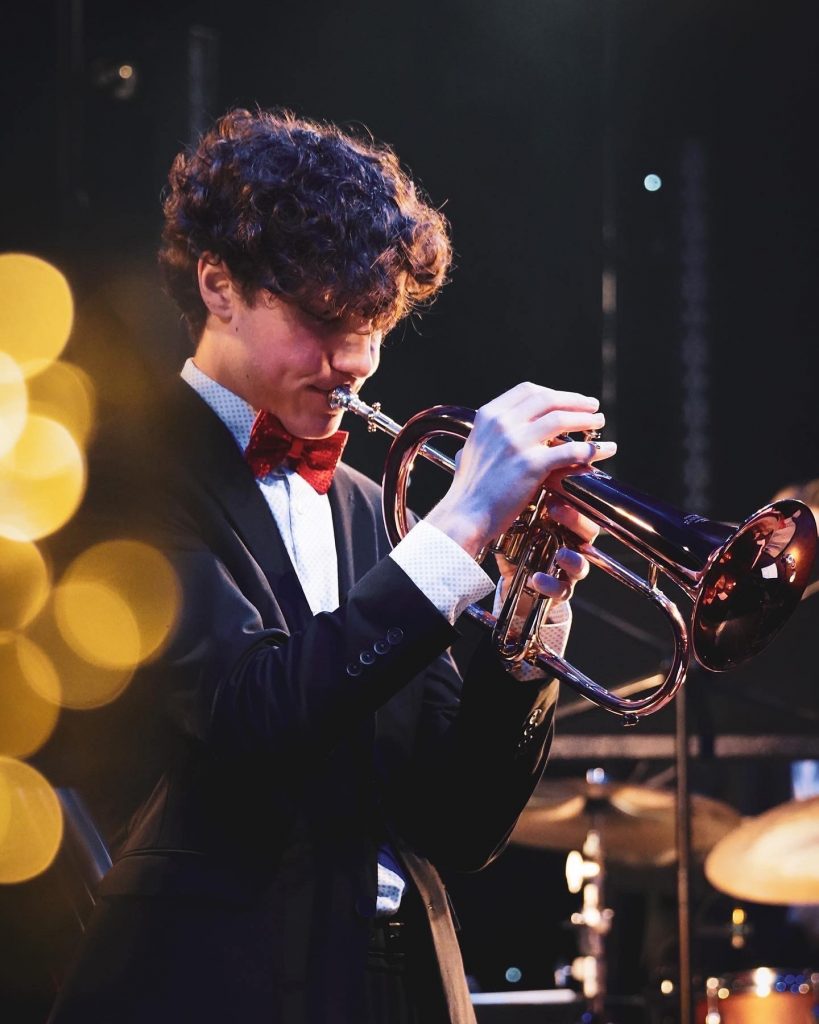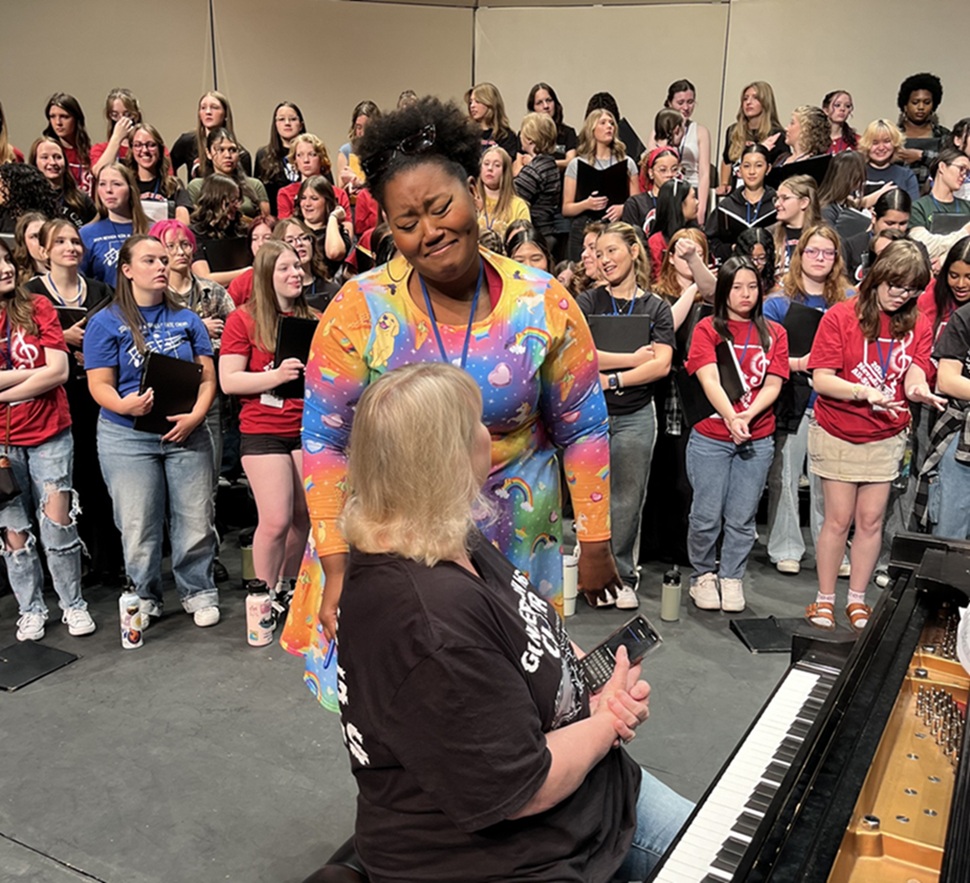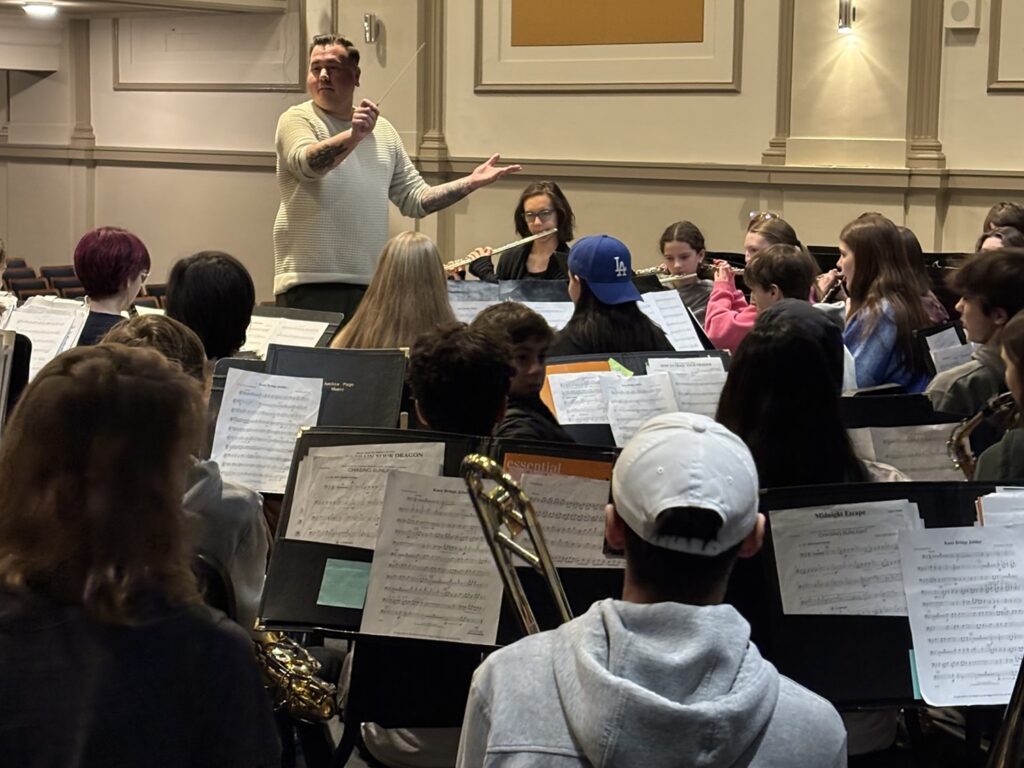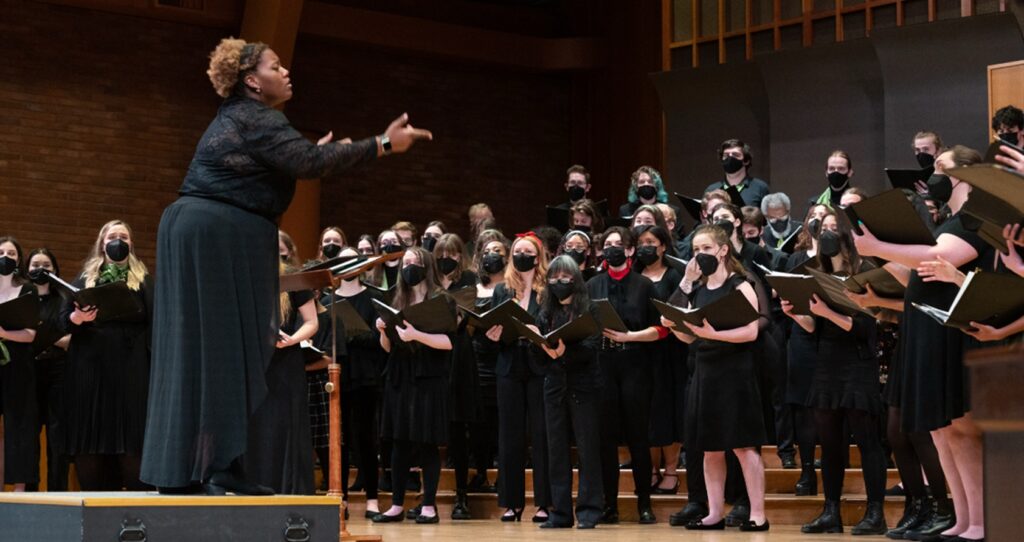Tagged Under:
Incorporate Jazz in Your Classroom Daily
To keep a band program moving forward, you must capture the attention of young people. One way to do this and to increase retention is to integrate jazz into the curricula.
Jazz is an American treasure that is considered by many to be the most significant contribution to music. Historians have traced its roots back to Congo Square in New Orleans. Located at the mouth of the Mississippi River, the Port of New Orleans was a prime location for goods to be shipped in and out of the city. Travelers from across the globe were constantly coming and going from here.
There is no place like New Orleans. The music created in the city is organic and constantly evolving. It’s not a style that can be stamped, pressed and rolled off a cookie-cutter assembly line. With the constant influx of travelers during the city’s early history, New Orleans became the perfect melting pot to brew up the musical gumbo now known as jazz.
Schools, districts and band programs have evolved dramatically in recent years. Many band programs took a massive hit during the pandemic that set them back years due to the temporary pause caused by restrictions and outbreaks. In many cases, jazz bands have been one of the harder-hit components of school band programs. With fewer jazz bands in school programs, fewer young musicians are exposed to jazz, which is sad because kids who are introduced to it love it.
To keep a band program moving forward, you must capture the attention of young people. One way I have generated interest and increased retention in my program is by incorporating jazz into the curricula.
THE YAMAHA EDUCATOR NEWSLETTER: Join to receive a round-up of our latest articles and programs!
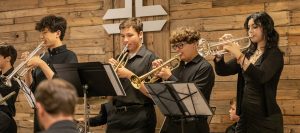
Make Connections with Jazz Repertoire
Keeping jazz alive in band rooms across the country is a vital piece of our American identity. I teach at Marrero Middle School, which is located just outside of New Orleans, where jazz is deeply rooted in the culture and daily life of young and old alike. Jazz incorporates improvisation, which offers young people a unique form of critical thinking and self-expression.
Make selecting jazz repertoire simple. For example, the musical notes used in Count Basie‘s tune “Splanky” are the same ones used in Stravinsky’s “The Rite of Spring.” The chords on Miles Davis’ “Kind of Blue” album were composed like those in one of Bach’s fugues. The point is that all styles of music have similar threads. Some of the characteristics that make different styles of music sound so different from each other are the feel, context and the way the phrases lay in correlation to the beat.
“Hey Pocky A-Way” by the New Orleans band The Meters has a totally different feel than anything else you will ever hear. It’s often described as having a very “New Orleans sound.” The rhythm section’s use of polyrhythms create a distinctive “language of rhythm” that is indigenous to New Orleans. Locals learn this unique rhythm the same way they learn to speak through continuous listening. In truth, jazz is like a language that requires exposure to fully understand.
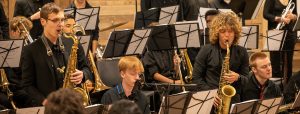
Listen to Jazz Every Day
In order to encourage students’ interest in jazz, they must first be exposed to it. If we want our band to play jazz, they need to listen to it. A simple way to incorporate some jazz into the class setting every day is to turn on some jazz while students are setting up and packing up during each class period. Always pick high-interest songs.
Many younger kids like brass bands like the Dirty Dozen Brass Band and the Rebirth Brass Band. Modern brass bands play music associated with parades or other fun experiences, which helps capture students’ interest.
Whatever you choose, use music that grabs your kids’ attention. Once you have their attention, you can mix it up in any direction you want and expand their listening even further.
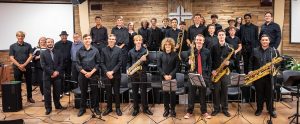
Introduce the Blues
Harmonically, so much of jazz is rooted in the blues, so I recommend introducing basic blues to your students. Make sure they know what notes make up the blues scale and the basic blues chord progression (which is standard progression). Teach them what notes they should use and which ones to avoid for improvisation purposes. Identify the patterns of a blues form and explain how these harmonic patterns are the same for so many songs. This will open up a young musician’s ears and understanding, which will eventually help them feel more comfortable with improvisation.
The long-term objective is to have students apply the information they are learning to any song. For example, you may get a new song written in a different key signature than the one the band has been practicing in class. Though the key signature may differ from song to song, the harmonic structure will likely be composed around the same blues form. Once the harmonic structure of the blues form is understood, students will be able to identify when there are minor deviations which, in many cases, are just examples of a slightly altered blues form.
Many jazz standards are composed entirely around the blues form, which makes the blues the perfect springboard to introduce students to improvisation. Eventually, when students begin to apply the knowledge they acquire, the transition to improvisation will be easier.
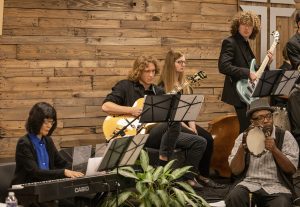
Know the Repertoire
Studying and knowing age- and level-appropriate jazz repertoire is vital to your group’s success. Are you looking to make an addition to a program with a new jazz band or do you have a well-developed, experienced jazz band? In either case, there are many suitable arrangements that are age- and level-appropriate.
For a young band that needs exposure to jazz, I recommend a simple melody like “C-Jam Blues.” This Duke Ellington tune is composed in a simple 12-bar blues form in the key of C. It provides students an excellent harmonic framework to work within.
If you think your band is still building toward a traditional big band arrangement, have the horns play only the melody at first. Focus on the band playing stylistically and accurately, and tell students to exaggerate those simple little phrases so they swing hard. This melody could be the foundation that the group builds on for the whole school year. Start with the entire band playing the melody and eventually move to a more traditional arrangement.
I also recommend opening up tunes like this to everyone even though jazz bands may not traditionally include some concert band instruments. Eventually, anyone can convert to a second instrument for jazz band purposes. When played correctly, someone can swing just as hard on a trombone as on a flute or clarinet.
Ear Training
To get buy-in from students, pick a melody of high interest to the band for ear training or have the band suggest a popular melody. One successful ear training method is to have the band learn the melody by ear collectively. Or give the band half the melody written out, then work together to figure out the rest of the tune’s melody. Both lessons work well, but one may fit your particular group of kids better.
Songs that I have used for this are “C-Jam Blues,” “Watermelon Man,” “Chameleon” and “Do Whatcha Wanna.” The melodies for these songs are simple enough that even young students can figure them out.
After the band learns the head, they typically dig into the charts because these are all such cool tunes. Even if you have a very young band, there are so many musical possibilities with these charts to expose young players to the possibilities of jazz.
After the head feels tight, explore transcribing a solo or a part of a solo, which can be done individually or as a group. The transcribing process forces students to open their ears.
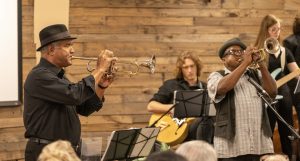
Find a Mentor
Students who show interest in jazz must find a mentor who can help guide and mold them. All music students should have a mentor they look to for inspiration and guidance. Learning the many nuances of jazz from experienced musicians who have played it is the best tool any student can have. Getting a private instructor is always an excellent first choice, but this depends on the student’s home and financial situation.
If a private instructor is not possible, there is still a lot a student can take in from listening to old recordings and imitating the sounds of one of the many greats. There are also many free online resources that make it easier for students to find an excellent musician to model.
Exposure is the Goal
Remember that the overall goal is to expose students to jazz. The only way to preserve jazz is to introduce more young musicians to the art form. Even if you have a limited background in jazz, there are still plenty of possibilities to explore. Suppose you are just beginning to incorporate jazz into your curricula. Remember that whether you are playing a tune with a funky New Orleans street beat or watching a video of the Preservation Hall Jazz Band performing “When The Saint Go Marching In,” it is still exposure to jazz.
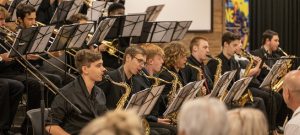
Draw from what you already know to get where you want to be. If your program does not currently have a full jazz band, you can begin by incorporating jazz into the curricula where possible. When you’re ready, start a smaller jazz band or combo, or form a more contemporary group that plays rock and brass band tunes. With time, add a standard jazz tune.
At the end of the day, music directors should play music that interests our students. That said, it is also our job to expose young musicians to music they aren’t familiar with. You can start by playing a classic rock tune that the kids know. Then begin to incorporate some arrangements from the more traditional big band repertoire, such as some Basie and Ellington standards.
Online Resources
There has been a tremendous increase in the use of technology in classrooms, especially since COVID forced just about every school into virtual learning. Here are two very thorough online resources that I have used to incorporate jazz education into my daily curricula:
- Preservation Hall Lessons: These online lessons are very well put together and include many musical elders. They allow anyone to learn the music directly from the original source of New Orleans jazz.
- New Orleans Jazz Museum Educator Resources: This is a great resource where you can learn about the history of New Orleans jazz through online virtual tours of the New Orleans Jazz Museum.
I would love to hear how you have built interest in jazz in your band programs or which jazz repertoire selections have worked for your band. If you’re looking for ideas to get a jazz program off the ground or are interested in jazz repertoire ideas, please contact me at JWilliamsband@yahoo.com or email educators@yamaha.com.
In addition to teaching and performing, I run a student jazz band called The Next Generation Jazz Band of New Orleans. Check us out on Facebook, Instagram and YouTube. Watch this video of the band performing “That’s It!”
Top photo by Christopher Broome










